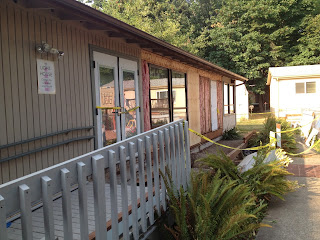You've probably heard of Thomas
Edison, the man who invented the lightbulb? People wanted that kind of magic
in their own homes. They wanted to be able to flip a switch and have
light, just like that! But, there was one problem. Thomas Edison's
lightbulb used carbon thread for a filament—that little curly line
inside the lightbulb—and the carbon thread lasted only about forty
hours before it burned out. Once the filament burned out, the
lightbulb would never work again. People would have to buy a new
lightbulb. Nobody wanted to buy new
lightbulbs all the time. They were expensive. So people gave up on
the idea of having electric lightbulbs in their homes, and kept on
using candles an kerosene lamps.
But I didn't give up on the idea
of electric lightbulbs. I was sure there was a way to make it work.
I decided I would find a way to make a longer-lasting light, a light
that people could afford to buy for their homes.
I knew it wouldn't be easy. I'd only been to a few years of elementary school
before I had to get a job to help support my family, when I was only
ten. Life was hard for my family.
I figured out that whatever I wanted to
learn, I could find out from books or by teaching myself what I
wanted to know. I worked in a patent office, a company that helps
inventors. The company I worked for
drew the pictures for the patents. I helped Alexander Graham Bell
draw diagrams of the telephone and get the patent on that. I liked
to do experiments, and I had also invented some things myself. Even
though I didn't have a college degree or a high school education, I
was a scientist and an inventor and an engineer.
So I decided I could figure out
how to make a longer lasting lightbulb. And I did it! I designed a
carbon filament that was baked in a special way and so lasted for a
long, long time, hundreds of hours. I received a patent for my
carbon filament, which means the United States government recognized
that I was the inventor, the very first person to create that carbon
filament.
Electricity wasn't the only type
of light I helped to create. I loved leaning new things and teaching
others. I believed in sharing the light of truth. I helped people
who were hungry or were poor, just like my family had been. I knew
that helping others was another way of sharing light.
In one of my poems I wrote:
To love while we live
And give aid to each other
Is the sunshine of life
That turns night into day.
In 1908 I helped to start a
Unitarian church in New York. People still go to that church, over a
hundred years later. That Unitarian Universalist church—just like
this Unitarian Universalist church—gives a long and lasting light.
I knew of Unitarians all my life. My parents had been helped by
Unitarians, and the Unitarian beliefs in the importance of character,
the toleration of different views, and the enthusiastic approach to
learning matched my own views well. My wife and children and I were
all active Unitarians.
I'm proud of the things I
created that made a difference in the world. I wonder what you might
create that will also help to make a difference?
(Adapted from A Lamp in Every Corner by Janeen K Grohsmeyer).


















































